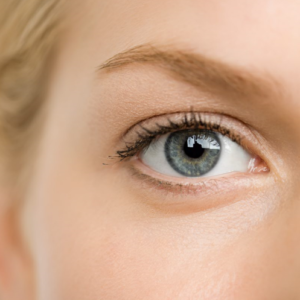Dry Eye Disease
The tear film plays a crucial role for the ocular surface and clarity of vision. It provides lubrication, nourishment, and a refracting surface that is necessary for clear and comfortable vision. It is made up of a complex 3-layer system consisting of mucous, water, and oil. If any of these layers are compromised, you may experience symptoms or signs of dry eye disease.
What is Dry Eye Disease?
Dry eye is an inflammatory condition that will progress unless it is treated effectively. Most cases of dry eye are associated with a deficient oily layer, secondary to MGD (Meibomian Gland Dysfunction). A recent study indicated that 86% of patients with dry eye disease have MGD.(1)
At NC Eye Associates, we use the latest techniques and imaging equipment to evaluate the tear film, ocular surface, and meibomian glands to create an appropriate customized treatment plan for each individual patient.
What are the most common symptoms of Dry Eye?
- Intermittent blurred vision that changes after blinking
- Excessive Tearing
- Redness
- Discomfort or intolerance to contact lenses
- Glare
- Eye fatigue
- Gritty feeling
- Burning sensation
- Sharp pain
*Most of the above symptoms will worsen later in the day and vary in their degree of severity
How do you treat dry eye?
When most people think about treating their dry eyes, the first thing that comes to mind is administering eye drops like artificial tears or some other liquid to nourish the surface of the eyes. This is, in fact, NOT the treatment of choice. While artificial tears do provide relief of the symptoms of dry eye, they do not treat the root cause of the condition, and the condition continues to worsen over time.
Some common treatments for dry eye include:
- Warm compresses
- Anti-inflammatory medications
- Lid hygiene
- Oral supplements
- BlephEx (Microblepharoexfoliation)
- TempSure Envi Radio Frequency Therapy
- Lumenis M22 IPL
- Lipiflow (See video below)
- TrueTear (Neural stimulation)
- PROKERA® (Amniotic Membrane allograft for healing damaged ocular tissue)
- Punctal plugs
- Artificial tears, gels and/or ointments
- Scleral contact lenses
What to do if you suspect dry eye
Our eye doctors specialize in the treatment of dry eye disease. If you are experiencing symptoms of dry eye or are looking for a local optometrist to manage treatment of dry eye disease, please schedule an appointment today.
(1) Lemp MA, Crews LA, Bron AJ, Foulks GN, Sullivan BD. Distribution of aqueous deficient and evaporative dry eye in a clinic-based patient population. Cornea. 2012 May;31(5):472-8.
(2) Video: “Dry Eye and MGD” by TearScience on Vimeo.

